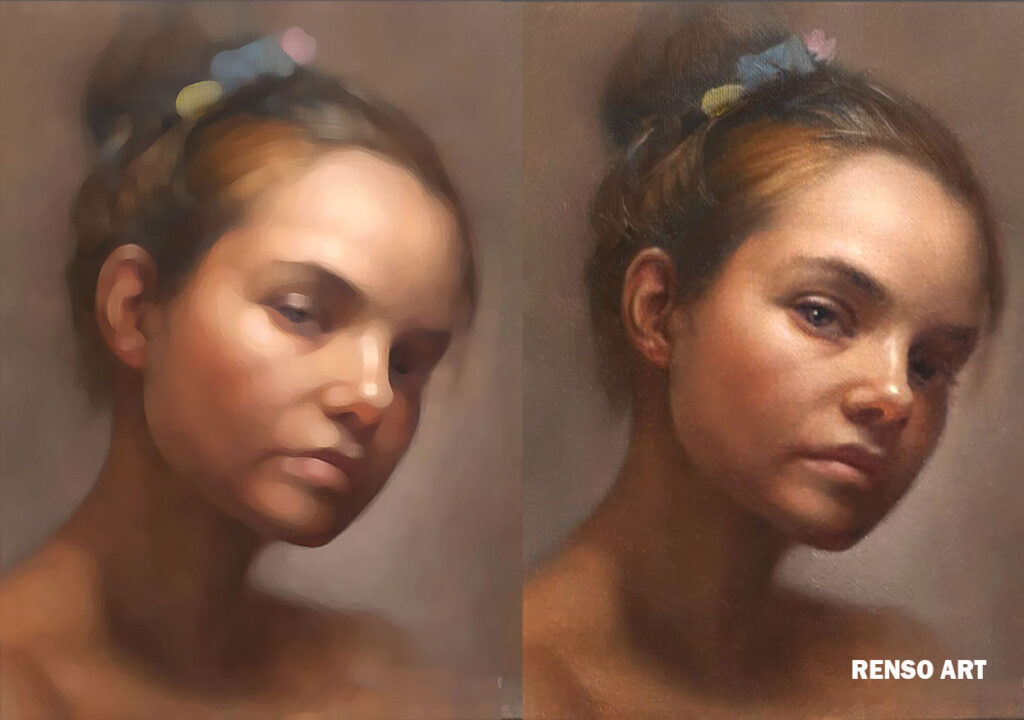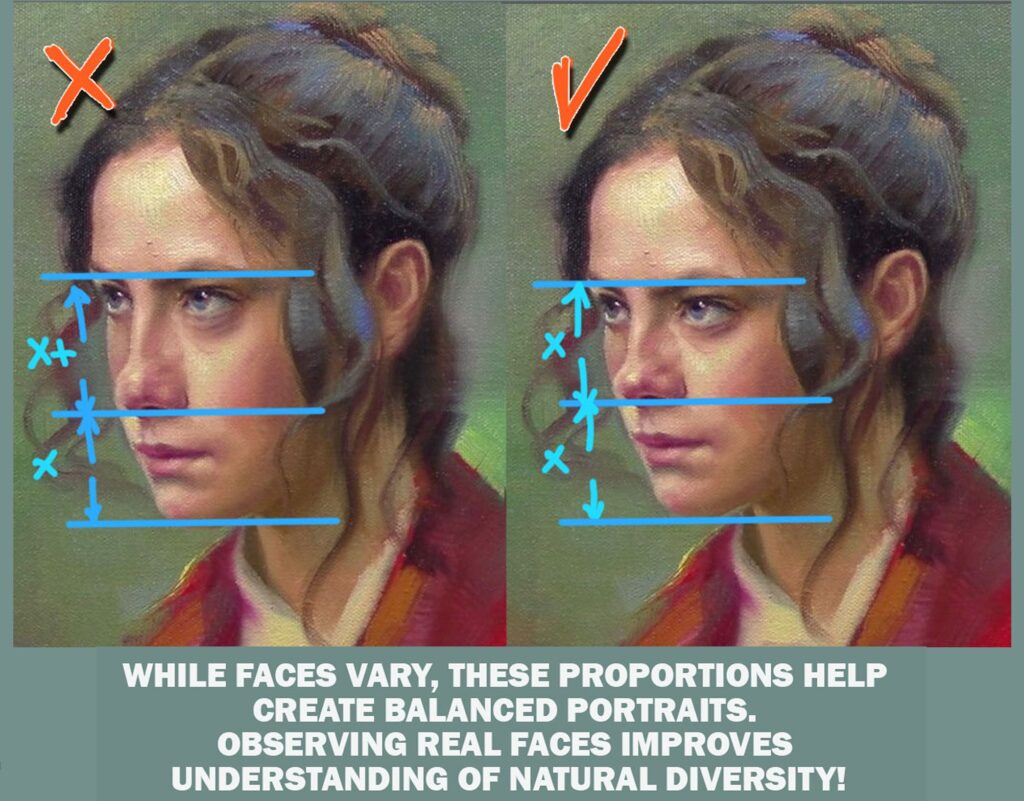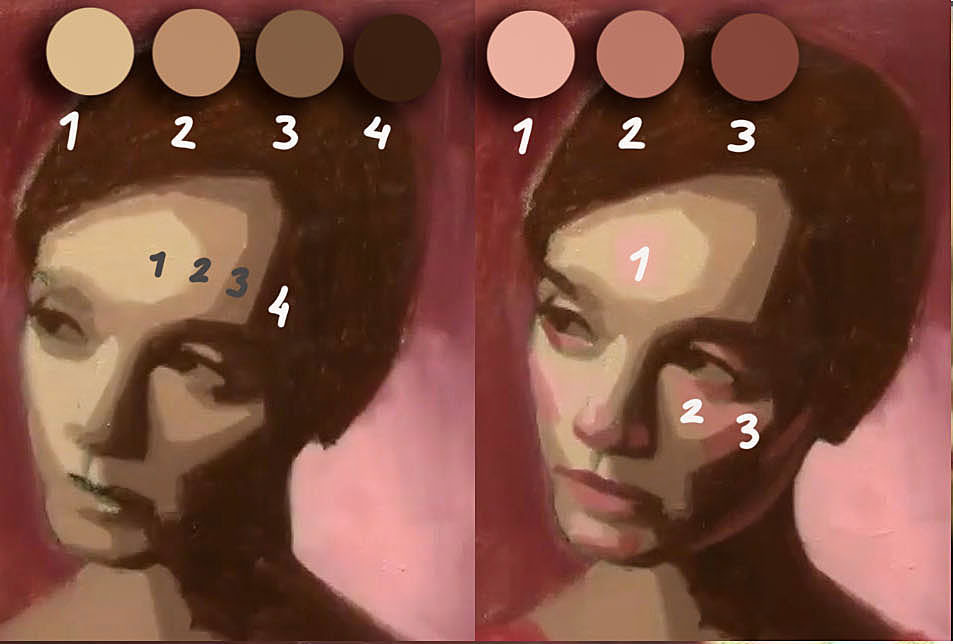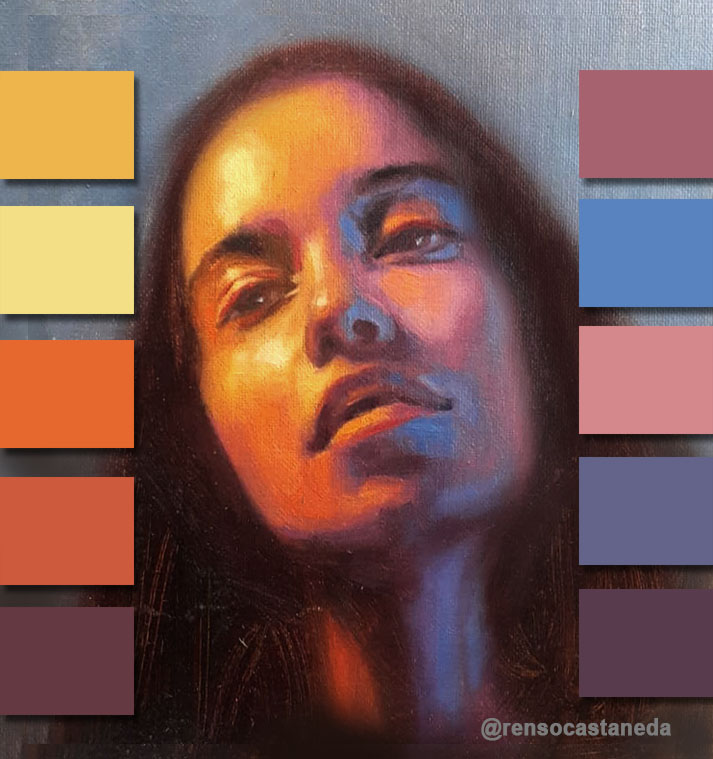Struggling with your portraits? You might find my E-book helpful. Click here
One of the hardest things for any artist is learning to see their own work clearly. When you’ve spent hours blending colors and shaping forms, it’s easy to lose objectivity. You might look at your painting and feel unsure — something’s not working, but you can’t tell what.
That’s when learning to self-critique becomes one of the most powerful tools in your artistic growth. It’s not about judging yourself harshly — it’s about observing with curiosity, just like a teacher or mentor would.
Here’s a simple step-by-step guide I use (and teach in my critiques) to help artists evaluate their work and keep improving.
1. Step Back and Squint
Before analyzing details, step a few meters back from your painting. Squint your eyes until you see only the big shapes and values.
Ask yourself:
– Does the composition feel balanced?
– Is my focal point clear?
– Are the darkest and lightest areas placed where I want attention?
Squinting removes distractions and shows whether your **value structure** works. A strong painting reads well even when blurred.

2. Check Your Drawing and Proportions
Even in loose or expressive styles, good drawing underpins everything. Compare your subject to your painting — do the angles, distances, and alignments make sense?
Try this:
– Take a photo of your painting and flip it horizontally. Mistakes often jump out immediately.
– Look at it upside-down — it helps you see shapes instead of objects.
– Trace the main lines on tracing paper or digitally; see if the structure holds.
Don’t think of this as criticism — it’s simply about accuracy and flow.

3. Study Your Values
Values are the backbone of realism and form.
Ask:
– Do my lights and darks separate clearly?
– Are my midtones too similar?
– Did I lose the light source or shadow pattern?
Convert a photo of your painting to black and white. If it looks flat, strengthen your value contrast. When values work, colors shine naturally.

4. Evaluate Color Harmony
Now that your structure is solid, look at the color relationships.
Ask yourself:
– Are the colors too saturated everywhere?
– Do warm and cool tones balance each other?
– Is there a consistent light temperature (warm light / cool shadow)?
Color harmony often improves when you simplify. A few well-chosen colors can say more than dozens that compete for attention.

5. Observe Edges and Transitions
Edges guide the viewer’s eye and bring life to your forms.
Check:
– Are some edges too sharp where they should be soft?
– Did I lose definition where I need focus?
– Do my brushstrokes follow the form or fight it?
A mix of sharp, soft, and lost edges creates rhythm and realism — especially in portraits, animals, and still lifes.
6. Ask: What’s Working Beautifully?
It’s easy to focus only on what’s wrong. Instead, also ask:
– Which parts feel alive?
– Where did I express something honestly?
– What did I learn from this piece?
Every painting, even an imperfect one, teaches you something. Keep notes; over time you’ll start to recognize patterns — and solutions.
7. Take a Break and Revisit
After finishing, leave the painting alone for a day or two. When you return, you’ll see it with new eyes. Sometimes the problem solves itself; sometimes you’ll spot the exact area that needs attention.
Artists often say, “I couldn’t see it before.” That’s normal — fresh vision is part of the process.
Bonus Tip: Get a Second Pair of Eyes
Even when you practice self-critique, having another experienced artist look at your work can reveal what you can’t see yet. That’s why I offer personal art critiques — warm, constructive feedback designed to help you grow with confidence.
If you’d like me to review one of your paintings, I’ll show you what’s working beautifully and where small adjustments can make a big difference.
Four Live critique sessions Tuesday 10 am (Peru Time) for 24 usd payment through paypal or you can Join my critiques here: https://www.patreon.com/c/rensocastaneda/membership
Remember: learning to critique your own art isn’t about perfection — it’s about seeing, understanding, and evolving. Every artist, from beginner to master, goes through this process. The more you practice observing with love and honesty, the faster you’ll grow.
- From Planes to Realism: How to Soften Structure Without Losing Form
- How to Paint Planes of the Face in Warm and Cool Light
- Top 5 Mistakes Beginners Make in Portraits
- How to Self-Critique Your Own Paintings
- The Secret Rhythm of Brushstrokes on Skin
As always, such helpful information! Thank you Renso